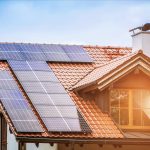Nowadays, energy is essential to our way of life, but energy costs can quickly become overwhelming. Fortunately, off-grid energy technologies offer innovative solutions to reduce your reliance on traditional and expensive sources. In this article, we’ll explore how to save money with these technologies while adopting sustainable practices.
Solar Energy Statistics: According to the International Energy Agency (IEA), in 2019, global PV capacity reached nearly 635 GW, with an annual growth of about 20%. In addition, according to the International Renewable Energy Agency (IRENA), the cost of solar installations fell by 82% between 2010 and 2019, making solar energy increasingly accessible to individuals.
According to data from the Solar Energy Industries Association (SEIA), the average household with solar panels in the U.S. can save between $10,000 and $30,000 over the lifespan of the panels, which is typically 20 to 25 years.
Benefits of wind energy: Wind energy, which takes advantage of the movement of air to generate electricity, is another off-grid alternative. Wind turbines can be installed in gardens or farms to provide a constant source of electricity.
Wind Energy Statistics: According to the IEA, global wind capacity stood at 622 GW in 2019, with Europe and China leading the way in wind growth. Wind energy costs have also seen a significant reduction over the years. IRENA reports that the cost of onshore wind energy decreased by nearly 40% between 2010 and 2019.
On the other hand, a report by the American Wind Energy Association (AWEA) states that an average residential wind project in the United States can save a household about $125 per month on their electricity bill.
It should be noted that these statistics may vary depending on regions, government policies, and tax incentives, but they clearly demonstrate the economic potential of off-grid energy technologies.
Saving money with off-grid energy technologies
Off-grid energy technologies, also known as stand-alone systems, allow users to produce their own energy independently, reducing their energy bills. These systems encompass various energy sources such as solar, wind, hydro, and even biomass.
Benefits of Solar Energy
Using solar panels is one of the most popular methods to save on energy bills. Solar panels capture energy from the sun and convert it into electricity. Not only does this approach reduce your expenses, but it also promotes an eco-friendly lifestyle. By installing solar panels on your roof, you can generate free electricity while helping to reduce carbon emissions.
Wind energy to reduce costs
Home wind turbines are another attractive option for reducing your energy bills. These turbines capture energy from the wind and convert it into electricity. If your area is windy, installing a home wind turbine can allow you to produce a significant amount of renewable energy. This will not only reduce your costs, but it could also allow you to sell excess energy to your local grid.
The Importance of Energy Efficiency
Along with the adoption of renewable energy sources, energy efficiency plays a crucial role in reducing your expenses. Simple practices like properly insulating your home, using energy-efficient appliances, and LED lighting can have a significant impact on your energy bill. Every kilowatt-hour you save counts for your wallet and the planet.
Energy storage
Energy storage is a critical aspect of off-grid energy technologies. Battery storage allows you to conserve the energy produced by your solar panels or wind turbines for later use, especially during periods of low production. This ensures uninterrupted power and allows you to maximize your savings by avoiding buying energy from the grid when rates are high.
Adopting sustainable practices on a daily basis
To truly take advantage of off-grid energy technologies, it’s important to adopt sustainable habits on a daily basis. Turn off lights when you leave a room, unplug appliances on standby, and avoid wasting energy. Every little bit contributes to an overall reduction in your energy consumption.
FAQ’s
How do solar panels work?
Solar panels contain photovoltaic cells that convert sunlight into electricity. When photons from sunlight hit these cells, they release electrons, generating an electric current.
What is a home wind turbine?
A home wind turbine is a small wind turbine designed to be installed on residential properties. It captures the kinetic energy of the wind and transforms it into electrical energy.
How can I store the energy produced by my solar panels?
You can store the energy produced by your solar panels by using storage batteries. These batteries store electricity for later use, so you can be self-sufficient even when the sun isn’t shining.
What are the environmental benefits of off-grid energy technologies?
Off-grid energy technologies reduce your reliance on fossil energy sources, thereby reducing greenhouse gas emissions. By using renewable energy sources, you are contributing to the fight against climate change.
How do I determine the size of the system I need?
The size of the system you need depends on your current energy consumption and savings goals. A professional can conduct an assessment to recommend the optimal size of your solar or wind installation.
Can I sell the excess energy I produce?
Yes, in many cases, you can sell the excess energy you produce to your local grid. This depends on the laws and regulations in your area, as well as agreements with your energy supplier.
Conclusion
Saving money with off-grid energy technologies is both a practical and sustainable solution. By switching to renewable energy sources, improving your home’s energy efficiency, and adopting energy-efficient habits, you can not only reduce your expenses, but also contribute to a cleaner, greener future. Take control of your energy consumption and save money.


